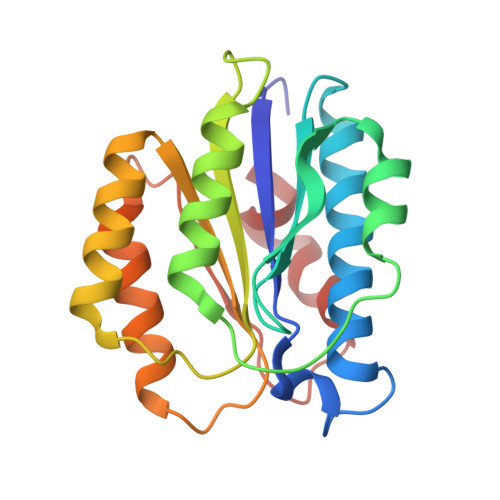Structure basis for recognition of plant Rpn10 by phytoplasma SAP05 in ubiquitin-independent protein degradation.
Zhang, L., Du, Y., Qu, Q., Zheng, Q.(2024) iScience 27: 108892-108892
- PubMed: 38322988
- DOI: https://doi.org/10.1016/j.isci.2024.108892
- Primary Citation of Related Structures:
8JTK, 8JTL - PubMed Abstract:
Besides traditional ubiquitin-dependent proteasome degradation, thousands of eukaryotic proteins more than previously appreciated could undergo ubiquitin-independent proteasomal degradation (UbInPD). A pathogen-encoded effector protein SAP05 secreted by phytoplasma, could hijack hostage Rpn10 subunit of proteasome derived from Arabidopsis thaliana and target the degradation of GATA BINDING FACTOR (GATA) or SQUAMOSA-PROMOTER BINDING PROTEIN-LIKE (SPL) transcription factors (TFs) without ubiquitin or additional proteasome shuttle factors. To explain how could SAP05 target the degradation bypassing the ubiquitin-dependent pathway, we have determined the crystal structure of the complex between Arabidopsis thaliana Rpn10 and Aster Yellows witches'-broom phytoplasma SAP05 or onion yellow phytoplasma SAP05, which showed a previously unknown recognition interface. Sequence alignment and structural biological evidence showed that this interaction is highly conserved in various SAP05 homologs, suggesting a general mode in plant infection. After docking the complex structure to the plant proteasome, SAP05 was near to the adenosine triphosphatase (ATPase) central pore and enough to submit substrate to degradation process, which suggested a molecular glue-like role to bridge TFs close to the ATPase central pore of proteasomes for the direct degradation.
Organizational Affiliation:
Institute of Translational Medicine, National Center for Translational Medicine (Shanghai), School of Chemistry and Chemical Engineering, Shanghai Jiao Tong University, Shanghai 200240, China.















